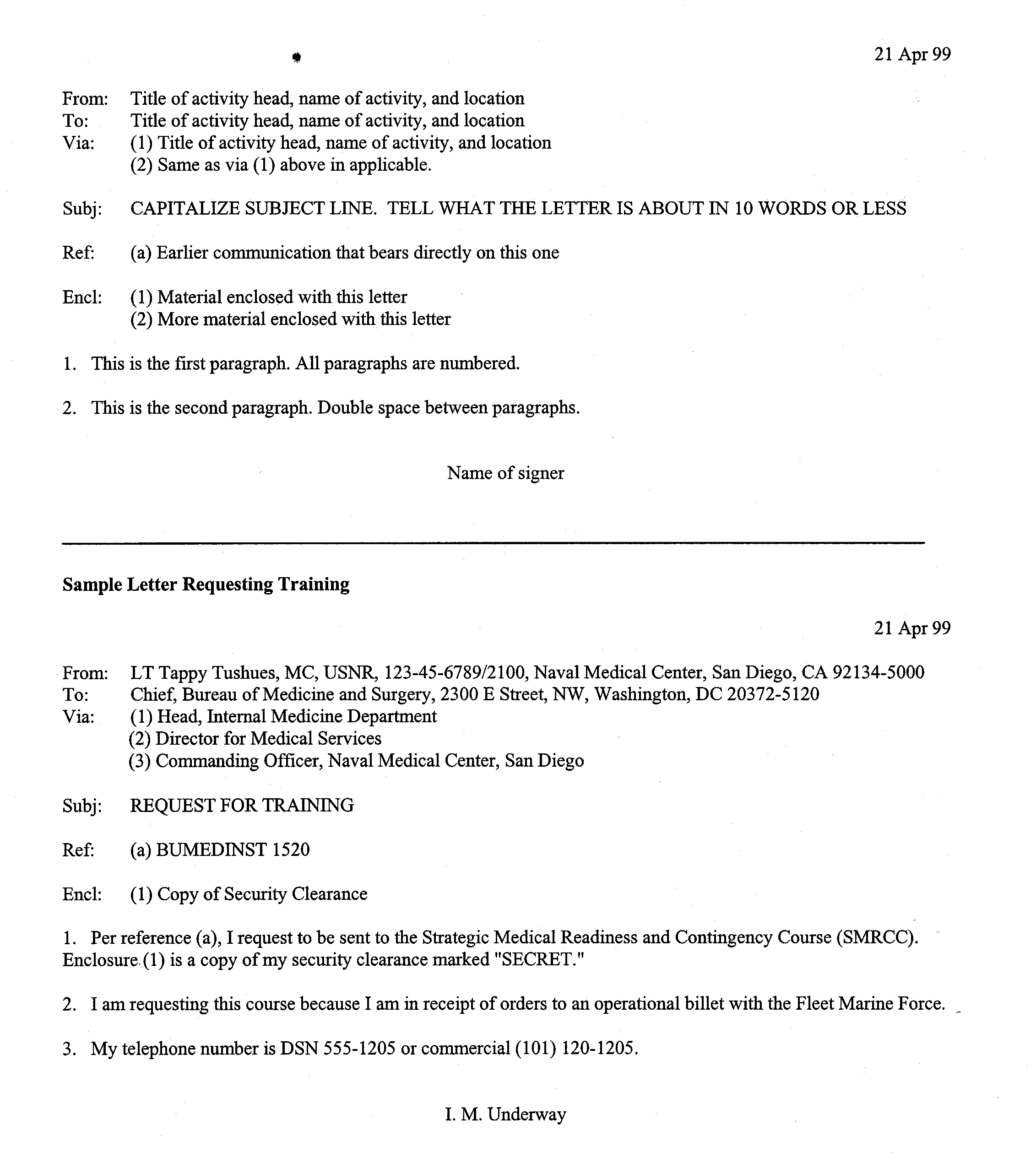Introduction
Writing is expressing thoughts on paper. Your writing represents you when you
can’t be there in person. If your writing is flawed, your reader will believe your
thinking is flawed.
The Department of the Navy’s Correspondence Manual and the Government Printing
Office (GPO) Style Manual (1984) provide required standards for writing. Always write to
the level of your audience and don't try to impress your reader with unusual or difficult
to understand words and phrases. Write in clear, concise, short sentences. When finished,
have someone read your correspondence. Be grateful for comments, corrections, and
suggestions that can be applied to your written material.
Recommendations
Obtain a copy of SECNAVINST 5216.5, the Department of the Navy Correspondence
Manual, and read section B entitled "Organized Writing". Just about every writer
of official correspondence has a copy close at hand. Aboard ship, the chief or senior
enlisted in sick bay can get one for you. When ashore, ask the department secretary for a
copy or ask your supply officer. This reference is free.
How To Write In Navy Format
